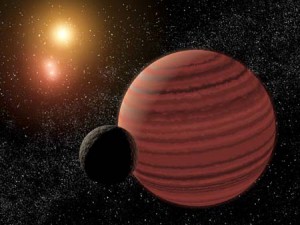Below are the projects and mentors available (with more to come!) for participating Morehouse & Spelman students, covering the following topics:
- Experimental Astrophysics: Prof. Keating
- Observational Astrophysics: Profs. Burgasser and Sandstrom and Drs. Melis & Simmons
- Theoretical Astrophysics: Prof. Fuller
- Experimental Biophysics: Prof. Schoetz Collins
- Experimental Condensed Matter Physics: Profs. Averitt and Maple
- Theoretical Condensed Matter Physics: Prof. Arovas
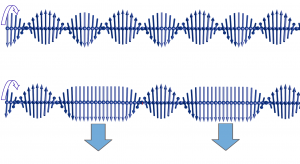 Characterizing Artificial & Quantum-based Materials
Characterizing Artificial & Quantum-based Materials
Prof. Dan Arovas (Theoretical Condensed Matter Physics)
Project Description: Prof. Arovas is seeking a research student to model collective excitations in frustrated magnets. You will learn how condensed matter physicists model magnetic systems and simulate such a model numerically (using a computer). Another possible project involves simulation of vehicular traffic flow and spontaneous formation of traffic jams.
Requirements: Students should have some programming experience, as well as basic familiarity with ordinary differential equations at the level of a calculus-based mechanics course.
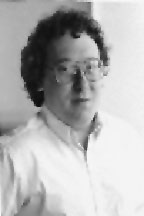 Brief Biography: Prof. Arovas is a theorist interested in strongly correlated quantum systems, particularly in low dimensions where quantum fluctuations can lead to interesting and exotic new states of matter. In recent years he has worked on collective excitations in broken symmetry phases of matter, such as magnets, superfluids, and charge density waves.
Brief Biography: Prof. Arovas is a theorist interested in strongly correlated quantum systems, particularly in low dimensions where quantum fluctuations can lead to interesting and exotic new states of matter. In recent years he has worked on collective excitations in broken symmetry phases of matter, such as magnets, superfluids, and charge density waves.
Webpage: http://physics.ucsd.edu/research/condensed_matter
 Characterizing Artificial & Quantum-based Materials
Characterizing Artificial & Quantum-based Materials
Prof. Richard Averitt (Experimental Condensed Matter Physics)
Project Description: Prof. Averitt is seeking a research student to physically characterize artificial metamaterials and quantum materials (superconductors, ferromagnets, etc.) using novel optical spectroscopic approaches. You will learn to use advanced optical spectroscopic experimental techniques used to characterize new materials, and the solid-state physics that describes them.
Requirements: Students should have completed at least an introductory E&M course (junior standing preferred), and some experience with optics is preferred but not required.
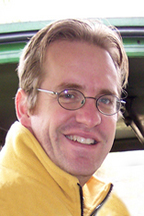 Brief Biography: Prof. Averitt uses advanced experimental techniques, including time-resolved spectroscopy from the far-infrared to the visible, to characterize the fundamental and technologically relevant properties of interesting materials, such as artificial (metamaterial) and quantum-based materials. His lab also designs, fabricates, and characterizes artificial materials.
Brief Biography: Prof. Averitt uses advanced experimental techniques, including time-resolved spectroscopy from the far-infrared to the visible, to characterize the fundamental and technologically relevant properties of interesting materials, such as artificial (metamaterial) and quantum-based materials. His lab also designs, fabricates, and characterizes artificial materials.
Webpage: http://physics.bu.edu/averittlab/
Prof. Adam Burgasser (Observational Astrophysics)
Project Description: Prof. Burgasser is seeking 1-2 research students to work on the SpeX Prism Library Analysis Toolkit (SPLAT), developing analysis tools to investigate low-resolution near-infrared spectra of cool brown dwarfs. You will learn how to reduce and analyze astronomical spectral data, and develop software in Python to search for and characterize rare populations, including metal-poor subdwarfs, young planetary-mass brown dwarfs, and spectral binaries.
Requirements: Some programming experience (Python preferred but not required); completion of Mechanics and E&M courses; some experience/knowledge of optics preferred but not required.
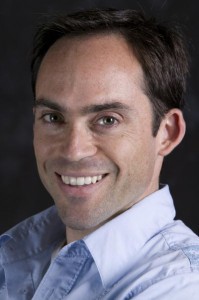 Brief Biography: Prof. Burgasser’s research is observational astrophysics, focusing on the atmospheres and physics properties of the lowest-mass stars, brown dwarfs and extrasolar planets. His tools include optical and near-infrared spectroscopy, photometric and spectroscopic monitoring, high-resolution imaging, and radio interferometry.
Brief Biography: Prof. Burgasser’s research is observational astrophysics, focusing on the atmospheres and physics properties of the lowest-mass stars, brown dwarfs and extrasolar planets. His tools include optical and near-infrared spectroscopy, photometric and spectroscopic monitoring, high-resolution imaging, and radio interferometry.
Webpage: http://coolstarlab.org
Prof. George Fuller (Theoretical Astrophysics)
Project Description: Dr. Fuller is seeking a research student interested in one of two potential projects: (1) neutrino physics in Big Bang Nucleosynthesis, specifically targeting effects on light element abundances from flavor transformation and sterile neutrinos; or (2) the problem of coupled neutrino interactions and nuclear physics in neutron star mergers.
Requirements: As much physics under your belt as possible, and willingness to learn to program.
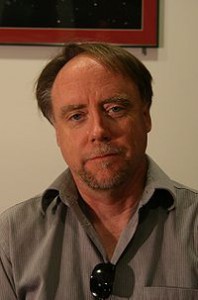 Brief Biography: Prof. Fuller is investigating theoretical issues in primordial nucleosynthesis and cosmology, especially as regards constraints on neutrino physics, the background neutrinos, and neutrino rest mass. Other recent projects include dark matter models with electroweak singlets, the QCD epoch in the early universe, and the instability and collapse physics of supermassive objects.
Brief Biography: Prof. Fuller is investigating theoretical issues in primordial nucleosynthesis and cosmology, especially as regards constraints on neutrino physics, the background neutrinos, and neutrino rest mass. Other recent projects include dark matter models with electroweak singlets, the QCD epoch in the early universe, and the instability and collapse physics of supermassive objects.
Webpage: http://casswww.ucsd.edu/index.php/faculty:Gfuller
 Dark Matter and the Cosmic Microwave Background
Dark Matter and the Cosmic Microwave Background
Prof. Brian Keating (Experimental Astrophysics)
Project Description: Dr. Keating is seeking 1-2 research students to work on a new high-resolution spectrometer and polarimeter for UCSD’s TRITON-Cam radio telescope, which will be used to detect Dark Matter in the Milky Way. Researchers will learn about cosmology and the physics of dark matter, electronics and radio/microwave spectropolarimetry techniques. By the end of the summer, researchers will use their spectrometer to measure the Milky Way’s rotation curve in H I, prepare a report on their work, and present their research at the UCSD Summer Research Conference.
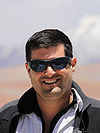 Brief Biography: Prof. Keating is an observational and experimental cosmologist, using novel detectors to measure the polarization and temperature variations of the Cosmic Microwave Background, and cosmological reionization. He is PI of the Simons Array on the POLARBEAR Telescope in the Atacama Desert, and collaborator on the BICEP and CIBER projects.
Brief Biography: Prof. Keating is an observational and experimental cosmologist, using novel detectors to measure the polarization and temperature variations of the Cosmic Microwave Background, and cosmological reionization. He is PI of the Simons Array on the POLARBEAR Telescope in the Atacama Desert, and collaborator on the BICEP and CIBER projects.
Webpage: http://cosmology.ucsd.edu/
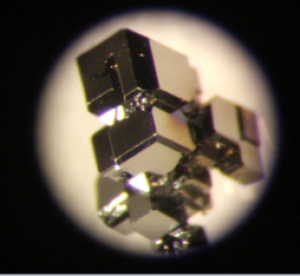 Studying the interplay between superconductivity and magnetism in novel materials
Studying the interplay between superconductivity and magnetism in novel materials
Prof. Brian Maple (Experimental Condensed Matter Physics)
Project Description: Prof. Maple is seeking a research student to investigate physical phenomena arising from correlated electron effects in novel materials, including superconductivity, magnetism, and quantum criticality. The interested student will be involved in the synthesis of single crystalline specimens of unique d– or f-electron compounds, and the characterization of these compounds through x-ray diffraction and physical properties measurements such as electrical resistivity, magnetization, and specific heat as a function of temperature, pressure, and magnetic field. This experimental experience will provide the student an opportunity to develop an understanding of some of the fundamental properties of matter.
Requirements: Students should have completed a course in introductory physics.
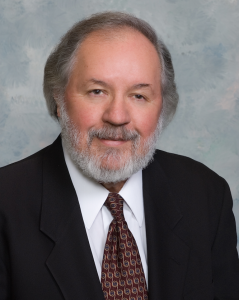 Brief Biography: M. Brian Maple’s research is focused upon correlated electron phenomena in novel d– and f-electron materials, including high-temperature superconductivity, unconventional types of superconductivity, valence fluctuation and heavy fermion behavior, quantum criticality, and exotic types of magnetism. Other research interests include surface science and matter under extreme conditions. Research activities in his laboratory include synthesis of materials in bulk and thin film form, single crystal growth, characterization of materials, and transport, thermal, and magnetic measurements as a function of temperature (into the millikelvin range), pressure (up to the megabar region), and magnetic field (up to 10 tesla).
Brief Biography: M. Brian Maple’s research is focused upon correlated electron phenomena in novel d– and f-electron materials, including high-temperature superconductivity, unconventional types of superconductivity, valence fluctuation and heavy fermion behavior, quantum criticality, and exotic types of magnetism. Other research interests include surface science and matter under extreme conditions. Research activities in his laboratory include synthesis of materials in bulk and thin film form, single crystal growth, characterization of materials, and transport, thermal, and magnetic measurements as a function of temperature (into the millikelvin range), pressure (up to the megabar region), and magnetic field (up to 10 tesla).
Webpage: http://mbmlab.ucsd.edu/
 Radio Astrometry and Variability of Nearby Stars
Radio Astrometry and Variability of Nearby Stars
Dr. Carl Melis (Observational Astrophysics)
Project Description: Dr. Melis is seeking a research student to analyze radio inferometry data of low mass stars observed with the Very Large Array and Very Large Baseline Array, to investigate variability associated with magnetic fields and to make ultraprecise (µarcsecond) astrometric measurements for distances and binary orbit determinations. You will learn about magnetic activity and radio generation in cool stars, the radio interferometry technique, and how to interpret radio data using electromagnetic physics principles.
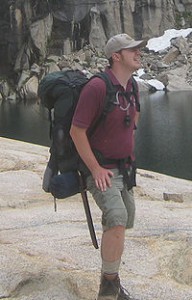 Brief Biography: Dr. Melis is a Research Scientist at UCSD whose research focuses on the birth, life, death, and re-birth of planetary systems with an emphasis on terrestrial (Earth-like) planets. He uses radio interferometry to study disks and magnetic activity around cool stars, and for precision astrometry.
Brief Biography: Dr. Melis is a Research Scientist at UCSD whose research focuses on the birth, life, death, and re-birth of planetary systems with an emphasis on terrestrial (Earth-like) planets. He uses radio interferometry to study disks and magnetic activity around cool stars, and for precision astrometry.
Webpage: http://cass.ucsd.edu/~cmelis/index.shtml
Dust and Gas in Nearby Galaxies
Prof. Karin Sandstrom (Observational Astrophysics)
Project Description: Prof. Sandstrom is seeking a student interested in learning how to study dust and gas in nearby galaxies using multiwavelength observations. There are a variety of possible projects including: studying the mid-infrared emission from dust using observations from Spitzer and WISE, analyzing Herschel and SOFIA observations of far-IR emission lines to study the heating and cooling of interstellar gas, or studying the creation of dust in core-collapse supernovae
Requirements: Some programming experience is preferred but not required.
 Brief Biography: Prof. Sandstrom investigates the interstellar medium: the gas and dust between the stars of a galaxy. In particular, she is interested in the properties of interstellar dust: how dust properties evolve over time, vary within and among galaxies, and how they influence the physics of the interstellar medium.
Brief Biography: Prof. Sandstrom investigates the interstellar medium: the gas and dust between the stars of a galaxy. In particular, she is interested in the properties of interstellar dust: how dust properties evolve over time, vary within and among galaxies, and how they influence the physics of the interstellar medium.
Webpage: http://karinsandstrom.github.io/index.html
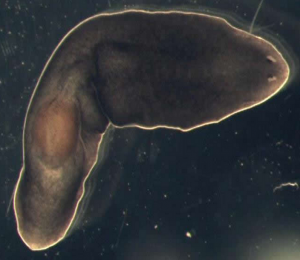 Characterizing Material Properties of Biological Tissues
Characterizing Material Properties of Biological Tissues
Prof. Eva-Maria Schoetz Collins (Experimental Biophysics)
Project Description:We are looking for a student with a keen interest in experimental soft matter, specifically biological materials. The student will work on characterizing the material properties of tissues and extracellular matrix components using various rheology techniques. The project combines experiments, image and data analysis in Matlab, and cellular and molecular biology techniques to understand the molecular mechanisms underlying the tissue’s material properties.
Requirements: Familiarity with Matlab or similar preferred. Completed mechanics courses; fluid dynamics preferred but not required.
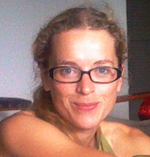 Brief Biography: Dr. Collins’s group investigates the role of physical principles for living systems, focusing on three major areas: biomechanics, asexual reproduction, and behavior and memory. They use techniques such as micro- and macrorheology, in vivo imaging, and force traction microscopy, and combine them with molecular biology methods to investigate how structure and function influence developmental processes, regeneration, and asexual reproduction.
Brief Biography: Dr. Collins’s group investigates the role of physical principles for living systems, focusing on three major areas: biomechanics, asexual reproduction, and behavior and memory. They use techniques such as micro- and macrorheology, in vivo imaging, and force traction microscopy, and combine them with molecular biology methods to investigate how structure and function influence developmental processes, regeneration, and asexual reproduction.
Webpage: http://schoetzlab.ucsd.edu/
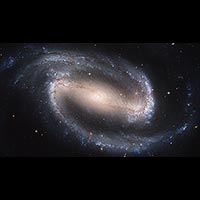 Tracing the Evolution of Galactic Disks
Tracing the Evolution of Galactic Disks
Dr. Brooke Simmons (Observational Astrophysics)
Project Description: Dr. Simmons seeks a research student to investigate the evolution of galactic bar features, tracers of the dynamical state of galactic disks. You will make use of data collected by the Hubble Space Telescope and analyze galaxies classified by Galaxy Zoo, analyzing measurements of the strength of bars in galactic disks and bar lengths and widths in comparison to measurements of galaxy properties such as mass and color. The ultimate goal of the project is to study the evolution of galactic bar properties and galactic disks over time.
Requirements: You must be willing to develop your programming skills. Other things that are optional but would be helpful: some familiarity with astronomical concepts, and completion of an introductory mechanics course. This project would particularly suit someone with an interest in public engagement in science
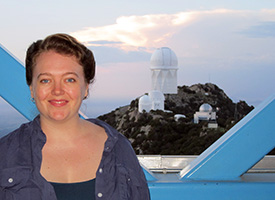 Brief Biography: Dr Simmons is an observational astrophysicist and Einstein Fellow at UCSD whose research focuses on galaxy evolution, particularly so-called “secular” galaxy growth, which occurs mainly in the absence of galaxy mergers. She also studies the growth of supermassive black holes in the centers of galaxies. She uses data from ground-based and space-based telescopes at multiple wavelengths. She also is involved in citizen science via the Galaxy Zoo project, where she is a member of the science team.
Brief Biography: Dr Simmons is an observational astrophysicist and Einstein Fellow at UCSD whose research focuses on galaxy evolution, particularly so-called “secular” galaxy growth, which occurs mainly in the absence of galaxy mergers. She also studies the growth of supermassive black holes in the centers of galaxies. She uses data from ground-based and space-based telescopes at multiple wavelengths. She also is involved in citizen science via the Galaxy Zoo project, where she is a member of the science team.
Webpage: https://cass.ucsd.edu/index.php/postdocs:Bsimmons


